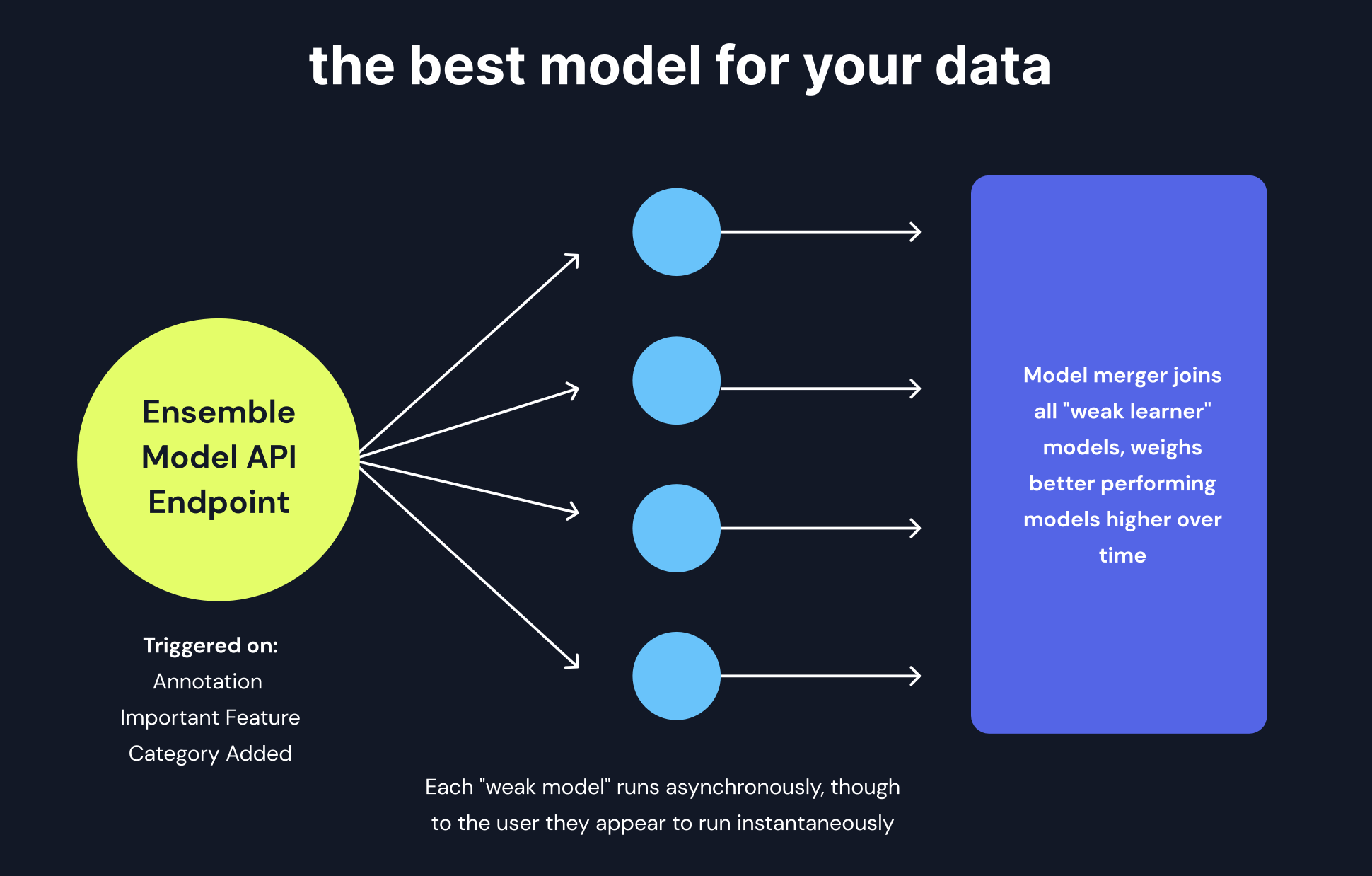Ensemble Model
Converting General Purpose Models to Domain Specific Use Cases
In the quest to tailor AI models for specific domains or use cases, the ensemble model plays a crucial role. It involves fusing generative AI models with human input on a few edge cases, resulting in an ensemble of models that collectively provide more accurate and domain-specific predictions. This markdown explores the ensemble model's functionality and how it can be leveraged to convert general-purpose models into domain-specific ones.

Ensemble Model API Endpoint
The ensemble model is accessible through an API endpoint that can be triggered based on certain events:
-
Annotation: When a human annotates a specific data point or provides input on the labeling of a particular instance, the ensemble model can be invoked to update its predictions based on this new information.
-
Important Feature: If a user marks an important feature or highlights a crucial aspect of the data, the ensemble model can be triggered to consider this information and adjust its predictions accordingly.
-
Category Added: When a new category or entity is added to the model, the ensemble model can be invoked to incorporate this new information and expand its understanding of the domain.
Asynchronous "Weak Models"
The ensemble model comprises multiple "weak models," each contributing to the overall prediction. These weak models run asynchronously, though to the user, they appear to run instantaneously. The asynchronous execution allows for efficient and scalable processing of predictions, providing near real-time responses.
Model Merger and Weighing
The ensemble model includes a model merger component responsible for consolidating the predictions from the weak models. As the ensemble model evolves and receives feedback, it dynamically adjusts the weights assigned to each weak model. Over time, better performing models are assigned higher weights, enhancing the ensemble model's predictive capabilities.
The model merger combines the outputs of the weak models, either by averaging their predictions or by employing more complex techniques such as weighted averaging or voting. This fusion of predictions from diverse models helps improve accuracy, robustness, and domain-specific performance.
Benefits and Advantages
The ensemble model offers several benefits when converting general-purpose models to domain-specific use cases:
-
Tailored Predictions: By fusing generative AI models with human input on specific edge cases, the ensemble model can provide more accurate and domain-specific predictions.
-
Real-Time Responsiveness: The asynchronous execution of weak models ensures near real-time responses, enabling seamless integration within applications or workflows.
-
Continuous Learning: Through the model merger and weighing process, the ensemble model can adapt and improve over time as it learns from feedback and incorporates better performing models.
-
Scalability: The ensemble model is designed to handle large volumes of data and high-frequency prediction requests, making it suitable for production environments.
Summary
The ensemble model plays a vital role in converting general-purpose models into domain-specific use cases. By fusing generative AI models with human input on edge cases and leveraging asynchronous execution, model merging, and weighing, the ensemble model offers tailored predictions, real-time responsiveness, continuous learning, and scalability. It enables AI systems to evolve and provide more accurate and contextually relevant predictions within specific domains or use cases.